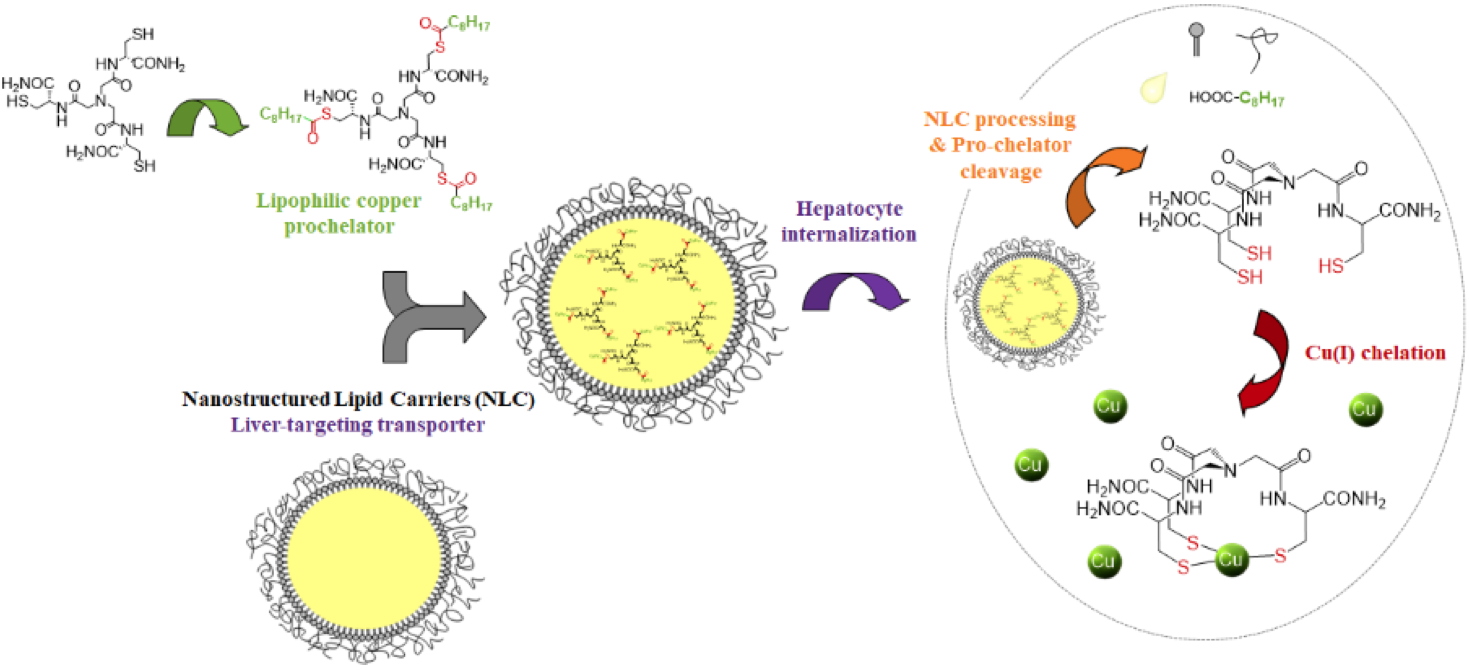Copper is an essential trace element for humans, but its accumulation is toxic for our body. Finely regulated biological mechanisms control its homeostasis,
i.e. its absorption, distribution and elimination. Copper homeostasis is notably regulated in the liver, which excretes excess copper into the faeces
via the bile. In Wilson's disease, patients have mutations in the major protein involved in this excretion mechanism, which leads to copper accumulations primarily in the liver and brain. The therapies currently used have been the same for decades and have side effects that limit compliance in Wilson's disease patients. For this reason, many laboratories are working to develop more effective therapies that are less restrictive for patients.
For more than ten years, IRIG researchers have been developing highly selective and affine chelators for copper in its Cu(I) form, which is the form found in our cells, in order to obtain the most effective active molecules possible for treating Wilson's disease
[1]. Nevertheless, the question of targeting these chelators to the target organs, in which copper accumulates, is major to reduce the doses used in the patient and to limit the side effects. IRIG and LETI researchers have developed lipophilic versions of these high-affinity Cu(I) chelators, which they have encapsulated into lipid nanovectors called lipidots
[2]. These are lipid vesicles with a diameter of less than 100 nm, a technology patented by CEA-LETI. Lipidots have two advantages in this strategy. Firstly, they allow the protection of the active molecule inside the lipid vesicles during its distribution in the organism after administration to the patient. Secondly, these lipid nanovectors can be optimised for organ targeting, thereby increasing the dose of chelator delivered where it is needed.
In this work, lipophilic copper chelator derivatives could be encapsulated in lipidots with high efficiency and these chelator-loaded lipidots proved to be stable over several months, which is a prerequisite for therapeutic application. The biological activity of lipophilic derivatives encapsulated or not in lipidots was also compared with the reference molecules currently used or under development in the treatment of Wilson's disease. It was shown that the lipophilic derivatives of Cu(I) chelators are more active than the reference molecules in coping with copper stress in hepatocytes, the major cell types of the liver, whereas the encapsulated form has a more moderate activity similar to a molecule under development. This proof of concept must now be completed by preclinical studies on the whole organism to demonstrate the interest of the lipid formulation and to validate this strategy before considering clinical trials in the future.

Left: Process of production of a lipophilic derivative of Cu(I) chelator and its encapsulation in lipidots.
Right: Schematic model of the entry into hepatocytes of lipidots containing the lipophilic derivative and releasing the copper chelator into the cells where it can trap excess Cu(I).
Contacts:
Aurélien Deniaud - Chemistry and Biology of Metals Laboratory (CBM)
Pascale Delangle - Molecular Systems and nanoMaterials for Energy and Health Laboratory (Symmes)
Isabelle Texier - Department of micro Technology for Biology and Health (DTBS), Molecular Systems and NanoMaterials for Energy and Health Laboratory